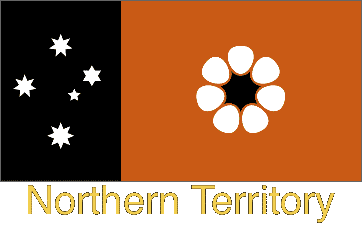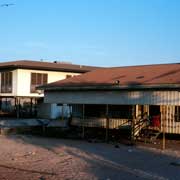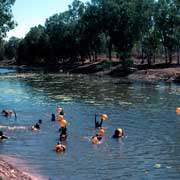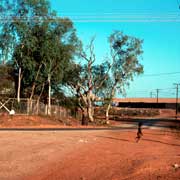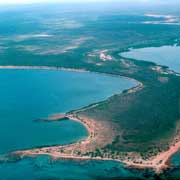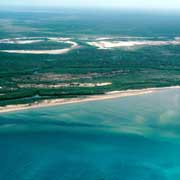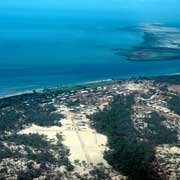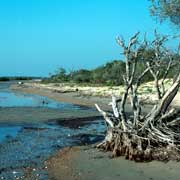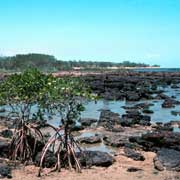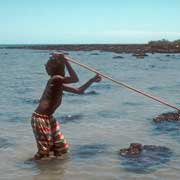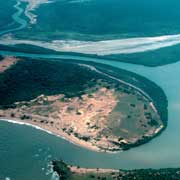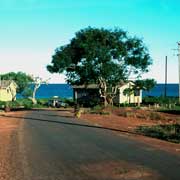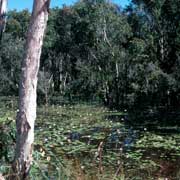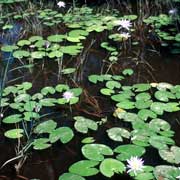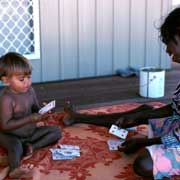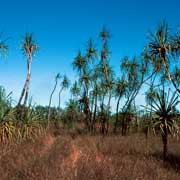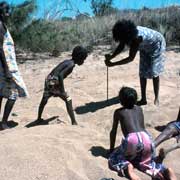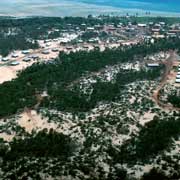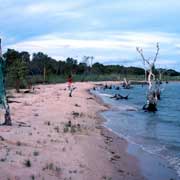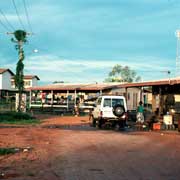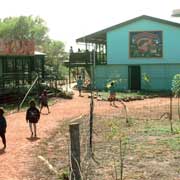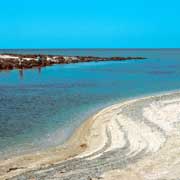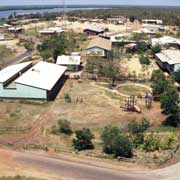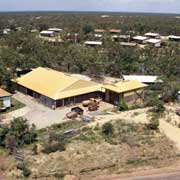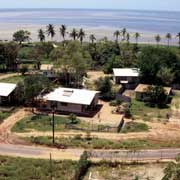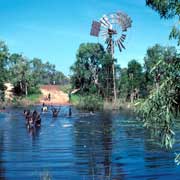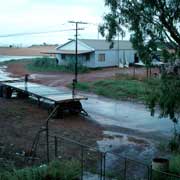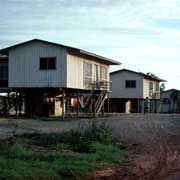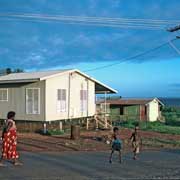Photos of South Eastern Arnhem Land - Numbulwar, Australia
South Eastern Arnhem Land - Numbulwar
Opposite Groote Eylandt, on the mainland of East Arnhem Land, is the Aboriginal community of Numbulwar. It was established as a permanent settlement by Aboriginal peoples and the Church Missionary Society as the Rose River Mission in 1952. The administrative authority was handed over to Aboriginal people from the mid-1970s. The Numbulwar Numburindi Government Council now administers the community. As in almost all remote communities, visitors to Numbulwar need a permit to enter this country.
you may then send it as a postcard if you wish.
The country that Numbulwar is built on, along the Rose River, belongs to the Nunggayinbala clan, one of the Wubuy or Nunggubuyu speaking clans from this region. Many clans have now established “Homeland Centres” or outstations on their ancestral lands, from Wuyagiba (Numamurdirdi clan land), just north of the Roper River in the south, to Walker River (Manggurra land) some 120 kilometres north of Numbulwar. Wumajbarr, about 12 kilometres from Numbulwar, is the nearest and belongs to the Nunggumajbarr clan; it is beautifully situated along a river. Malagayangu, about 50 kilometres north and a good fishing spot, belongs to the Murrungun clan. “Ownership” is determined by the existence of sites of significance associated with ceremonies and song cycles belonging to each clan.
These ceremonial activities are still essential, and boys’ initiations and other men’s rituals are performed regularly. The Nunggubuyu language (Wubuy), however, is in severe decline; although the school had a bilingual program, young people don’t speak it anymore but use “Kriol”, an Aboriginal Creole based on a mainly English vocabulary instead, like in Ngukurr and other communities in this region. Apart from Nunggubuyu clans, there are, directly to the west, several different groups: Ritharrngu, Ngandi, Wandarrang and Mara; but their languages are virtually extinct too.
